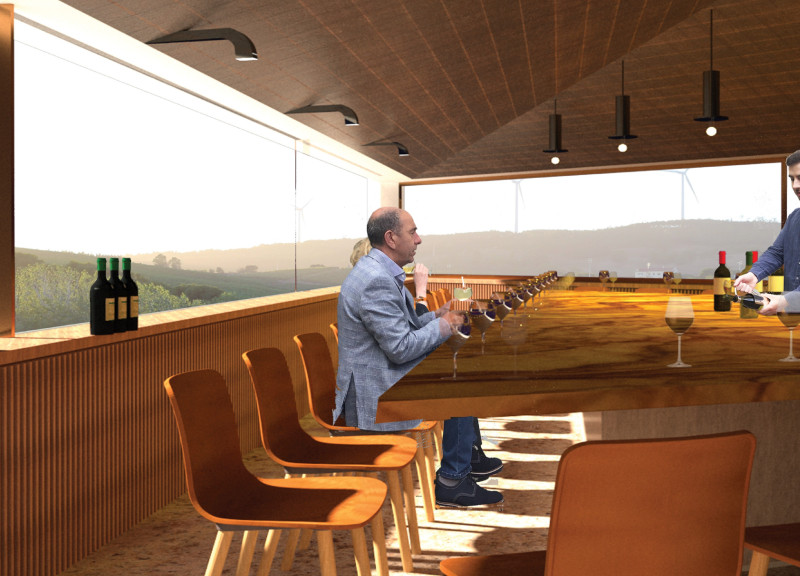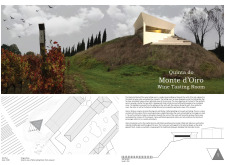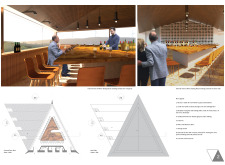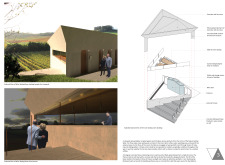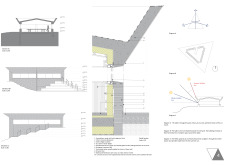5 key facts about this project
At its core, the project represents not just a building but a dialogue between modern architecture and the land's agricultural heritage. The structure is intentionally designed to emphasize the beauty of its surroundings, integrating elements that allow guests to engage with the vineyard fully. Its positioning allows for panoramic perspectives, making the tasting experience not just about the wine itself, but the scenery that accompanies it.
Functionally, the Wine Tasting Room serves as a venue for both intimate gatherings and larger events, accommodating up to thirty guests comfortably. The central tasting table acts as a focal point, encouraging interaction among wine enthusiasts and vineyard representatives. This layout promotes an inviting atmosphere, where visitors are encouraged to explore the nuances of each wine in relation to the local terroir. The careful arrangement of space within the tasting room also allows for versatility, making it suitable for various types of gatherings, from formal tastings to casual group events.
The architectural design features a single-storey structure with a distinct pitched roof that harmonizes with traditional barn-like forms. This choice not only reinforces the agricultural context but also facilitates natural light penetration, creating an airy and uplifting environment. The building’s triangular footprint is particularly noteworthy, as it aligns with the vineyard's rows, fostering a sense of unity between the architecture and the landscape.
Materiality plays a central role in the project’s identity. The use of concrete for the primary structure provides a robust and durable foundation while also allowing for a refined aesthetic with its white tint. Complementing this are timber elements that infuse warmth into the interior, particularly in the handcrafted tasting table that serves as a gathering point. The selection of aluminum for curtain wall glazing invites a transparency that blurs the boundary between indoor and outdoor spaces, enabling visitors to immerse themselves in the vineyard views.
Attention to detail extends to the exterior, where terracotta tiles are employed for flooring, connecting the building to the regional architectural vernacular. Furthermore, insulating materials have been implemented to ensure thermal comfort throughout the seasons, highlighting a commitment to sustainability.
The design uniqueness stems from its thoughtful integration within the natural landscape and attention to the building's purpose. Emphasizing experiential engagement, the layout encourages a flow that guides visitors through the space while maximizing exposure to breathtaking views. The interplay between traditional materials and modern design sensibilities fosters an environment that feels both of its time and place.
This architectural project exemplifies a careful balance between functionality and contextual relevance, demonstrating how design can enhance the appreciation of local culture and agriculture. Readers interested in exploring the nuances of the Quinta do Monte d’Oiro Wine Tasting Room should delve into its architectural plans, sections, and detailed designs to fully appreciate the ideas and intentions that shaped this remarkable project. These elements reveal the depth of thought behind the design and its resonance with the surrounding landscape, offering further insights into the architectural decisions made throughout the process. Consider exploring this project further for a comprehensive understanding of its contributions to contemporary wine tourism and architectural innovation.


